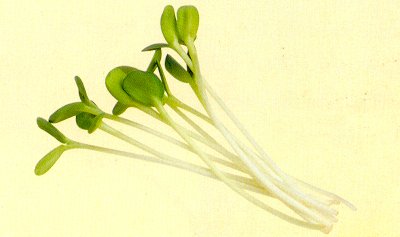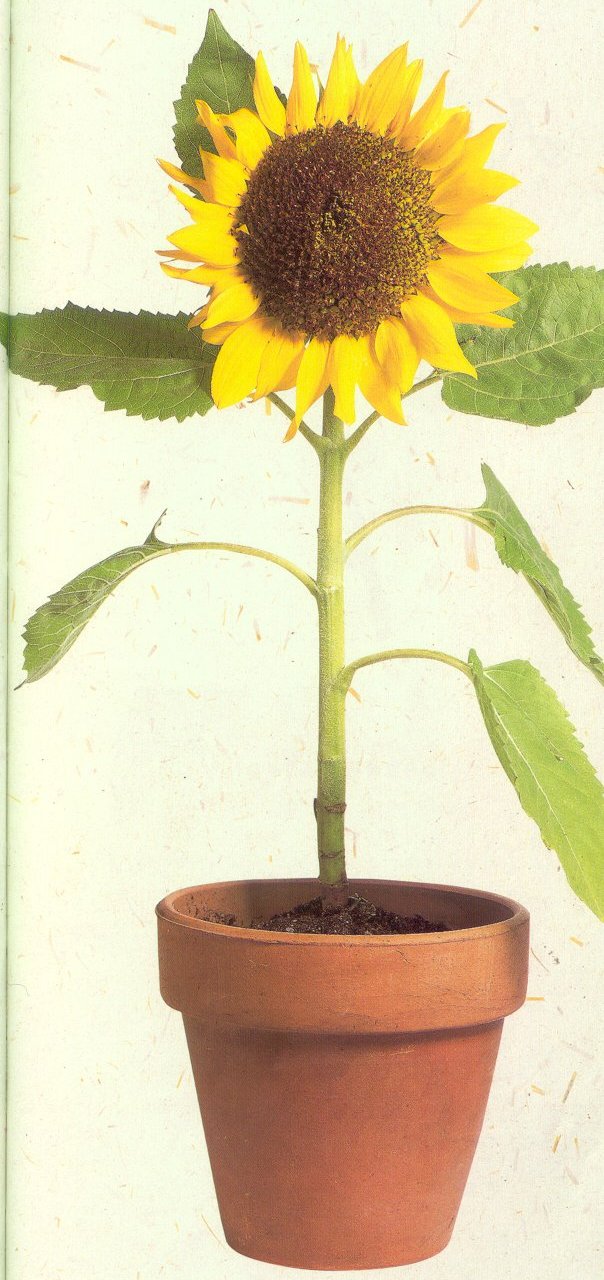|
|
|
| Sharing of Moral Values
|

The above Chinese calligraphy is kindly
contributed by Ms Florence Shen
|
|
|
|
|


|
|
|
| Why the sunflower is used in the logo of CancerStory.com? |
|
My late mother loved flowers and plants and I hope that this beautiful and lively sunflower will bring hope and the drive to celebrate life to people living with cancer and their families!
I feel that the radiant yellow colour of the sunflower is beautiful and signifies hope and joy. It is also a remarkable flower that offers potential health benefits.
In the following paragraphs I will share my knowledge on the symbolic sunflower.
|
|
|
|
About Sunflower
|
|
Sunflowers are daisies which are members of the Aster family. Together with the orchids, they belong to the two largest families of plants on earth. The sunflower is 3,000 years old and is so named because of its golden-rayed flowers which faces the sun from morning to night.
Although it is easy to think of the sunflower as a single flower, it is actually a composite of small florets which make up the face of the sunflower head and are arranged in circles. Each floret has its own ovary, stigma, style, and anthers and produces a single seed. A large sunflower head, perhaps a foot across, can have as many as eight thousand florets. The outer ring of florets has large ray petals, which can be a greenish yellow when young, turning a darker yellow orange on maturity. The green outer leaves are called bracts.
There are many species and varieties of sunflowers having various hues including yellow, red, amber, bronze, purple and orange.
|
|
World's Record on Sunflower
|
The largest sunflower head ever measured was thirty-two and a half inches in diameter. It was grown in Canada. The shortest sunflower was just over two inches. It was grown in Oregon using a bonsai technique. At the other end of the measuring stick, the tallest sunflower plant on record stretched twenty-five feet, five inches. It was grown in the Netherlands.
|
|
Sunflower Legend
|
It was said that when the Mormons left Missouri in the 1830s in search of a place where they could worship freely, the first wagon train scattered a trail of sunflower seeds to mark their trail. When the next wagon train set out the following summer, the people were easily guided to their new home in Utah by the path of sunflowers that stretched out before them.
|
|
Sunflower Green
|
|
Seven-day-old sunflower sprouts can be used as a salad green, and they can also be juiced and used in blending soups.
They are rich in chlorophyll, vitamins A, B1, B2, C niacin, the minerals calcium, magnesium, potassium and proteins. It strengthens the gall bladder, liver, circulatory and lymphatic systems, and the heart. Because it is high in calcium, it is soothing and cleansing to the digestive tract. Some research results had shown that sprouts have an inhibitory effect on carcinogens. Therefore, the sprouts (including sunflower sprouts) may be used as anticancer foods and they may also have beneficial effects on the body's immune system.
| |
 |
|
|
Growing your own Sunflower Sprouts
|
|
The first six hours : |
|
Step 1 : | Wash the seeds to remove any grime or dust.
|
|
Step 2 : | Use wide-mouth glass jars to soak sunflower seeds with water for six hours. Cover the jar with a piece of nylon mesh screening or air-permeable cloth and secure with a string or rubber band. Soaking will soften the seed case.
|
The next 2 days : |
|
Step 1 : | After six hours of soaking, drain the water off and place the jar in a moderately cool place away from bright light. The seed will dry out if there is too much warmth and light, and will mould if the temperature is too cold. Place the jar at a 45-degree angle, mouth facing downwards to drain away excess water. Leave it in this position for 24 hours.
|
|
Step 2 : | Rinse the germinated seeds thrice a day by placing the jar under the tap, filling it with water, and allowing it to overflow. After each rinse, place the jar at the same 45-degree position so that excess water will drain away.
|
The next 2 days : |
|
Step 1 : | Punch a few draining holes in a tray and fill it with a one-inch layer of soil and make drainage troughs or a gutter along the four sides.
|
|
Step 2 : | Remove the germinated seeds from the jar and spread them evenly on top of the soil and water them thoroughly. If seeds are planted too close together, they will not be able to breathe and will not grow well.
|
|
Step 3 : | Place another tray or black plastic over the seeds and leave them for 24 hours.
|
The next 5 days |
|
Step 1 : | Uncover the tray of sprouts, water them thoroughly and place it in a bright spot but not in direct sunlight.
|
|
Step 2 : | Water along the trough, and sprinkle the soil and growing sprouts with water twice a day.
|
|
Step 3 : | At the end of the fifth day, harvest the sunflower sprouts by cutting them at the soil line with a sharp knife or scissors. It is best to consume them once harvested as they taste better and are more nutritious. Otherwise, store them in the refrigerator in plastic bags lined with paper towels. Do not rinse the sprouts if you are storing them. They can last seven to ten days in the refrigerator.
|
Important note :
In the entire sprouting process listed above, you may encounter problems such as seeds not sprouting or not growing well when sprouted. Sometimes they may also turn mouldy. Such problems are usually due to humidity, temperature and also the poor quality of seeds and soils.
|
|
Phytochemicals in Sunflower Kernel
|
Sunflower kernels, commonly known as sunflower seeds are a wonderful source of many vitamins, minerals, good fats, and antioxidants that are needed to keep our bodies healthy. Research studies have shown that the sunflower kernel offers a variety of potential health benefits, because they contain high levels of the following phytochemicals that may protect against various diseases.
|
Vitamin E (tocopherols) | May protect against cardiovascular disease |
|
Betaine | May protect against cardiovascular disease |
|
Phenolic acids (chlorogenic acid) | Antioxidant and anticarcinogen |
|
Choline | Plays a role in memory and cognitive function |
|
Arginine | Potential heart benefits |
|
Lignans | May protect against heart disease and some cancers; lowers LDL cholesterol and triglycerides
|
|
Nutrient Comparison of Sunflower Kernels to Other Seeds, Nuts, and Fruits per 1 oz. Serving |
|
Nutrient | Folate
(mcg) | Vitamin E
(mcg) | Selenium
(mcg) | Iron
(mcg) |
Zinc
(mcg) |
|
Sunflower Kernels | 64.46 | 14.25 | 16.87 | 1.92 | 1.43 |
|
Blueberries | 1.81 | .28 | .17 | .05 | .03 |
|
Sesame Seeds | 27.41 | .64 | 1.62 | 4.12 | 2.20 |
|
Almonds | 8.22 | 7.42 | 2.24 | 1.22 | .95 |
|
Walnuts | 27.78 | .83 | 1.30 | .83 | .88 |
|
Pecans | 6.24 | 1.04 | 1.70 | .72 | 1.28 |
|
Hazelnuts | 32.04 | 4.31 | 1.13 | 1.33 | .70 |
Source: United States Department of Agriculture (USDA) Nutrient Data Laboratory.
Note: All values rounded to two decimal places. |
|
|
The Joy of Planting Sunflower with your Child
|
What better way is there to teach a child about nature than by planting sunflowers together? Little fingers can poke a hole in the earth, place a seed, and cover it up again. In just ten days little sprouts will be popping up, some wearing their striped or black seed shell for a hat. Growing high and fast, their Jack-and-the-Beanstalk growth is a feast of fantasy. Children will watch for the first appearance of harvestable seeds, will have great fun removing the seeds from the head, and will delight in bringing to the kitchen table something they had a hand in cultivating.

|
|
|
|
|



